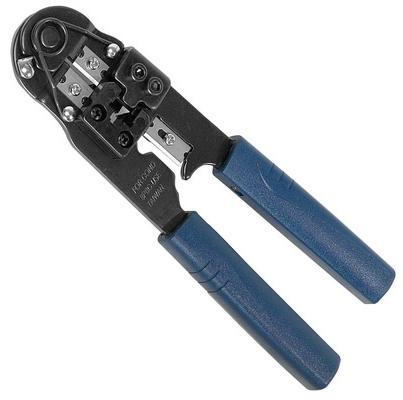There are various options for connecting a computer to the global Internet, but the method that uses Ethernet technology, that is, using twisted pair, is still the most common. In this case, the cable is connected to the network card through a special connector - RJ-45. Next, we will look at what the twisted-pair crimping scheme looks like. However, first you need to talk about its design. Twisted pair is one or more pairs of twisted conductors, insulated from one another and covered with a plastic sheath. In our case, that is, to connect to the Internet, a network cable is used, which includes four pairs of such conductors.
Next, you need to decide for what purpose it will be used before attaching the connector. There are two twisted-pair crimping schemes:
- direct - to connect a computer to a network splitter (switch), hub or router;
- cross (crossover) - to connect two computers directly between themselves.
If you need a direct twisted-pair crimp circuit , the conductors at both ends of the cable are located as follows:
In the case, if the crimp pattern of the twisted pair is cross, then the location of the conductors will differ:
As a rule, network cards of modern computers can "understand" the direct scheme when directly connecting two PCs, but we recommend that you play it safe and connect them using a crossover.
So, how is twisted pair crimped? To do this, you need the cable itself, a pair of RJ-45 connectors (a few are better) and a special crimp (or crimper), which has three work areas that perform certain functions. Closest to the handle is a knife with which the conductors are cut. Some varieties also have a special recess for removing external insulation from the cable. In the center of the crimper is a socket that serves directly to crimp the connector. And finally, in the upper part there is a special area used to strip the outer insulation of the twisted pair.

To begin, cut the end of the network cable with a built-in knife and strip a few centimeters from insulation with a notch. If it is absent, this can easily be done using a regular knife or scissors. Then part, untangle and align the pairs of conductors. Then distribute them by color, as indicated by the desired twisted pair crimping scheme, and align. Squeeze and trim their ends firmly with a crimper knife, leaving about 10 mm of unbound conductors. Insert them into the connector, making sure that the sections abut against the ends of the troughs. Again, check that the conductors are correctly positioned by color, place the RJ-45 in the appropriate
crimping pliers socket, and squeeze their handles until the cable retainer clicks in place.
However, it may happen that you do not have a crimper at hand. In this case, use a regular thin screwdriver. This method is more time-consuming and less effective, but can be useful in emergency situations. In general, the procedure is similar to that described above. The only difference is that in order to drown the teeth of the RJ-45 contacts, you need to press on them with the tip of the screwdriver, turned across, until the teeth completely enter the insulation. The pressure should be strong, but at the same time gently.
To test the performance of the crimped twisted pair, there is a special device - a LAN tester. However, sometimes you can do without it - on a bad or completely non-working network it will be already clear that a mistake was made somewhere.
So, we examined what twisted pair cable is, a crimp circuit, as well as tools with which you can make a network cable. As you can see, this procedure is quite simple and does not require any special knowledge and skills - only attentiveness.